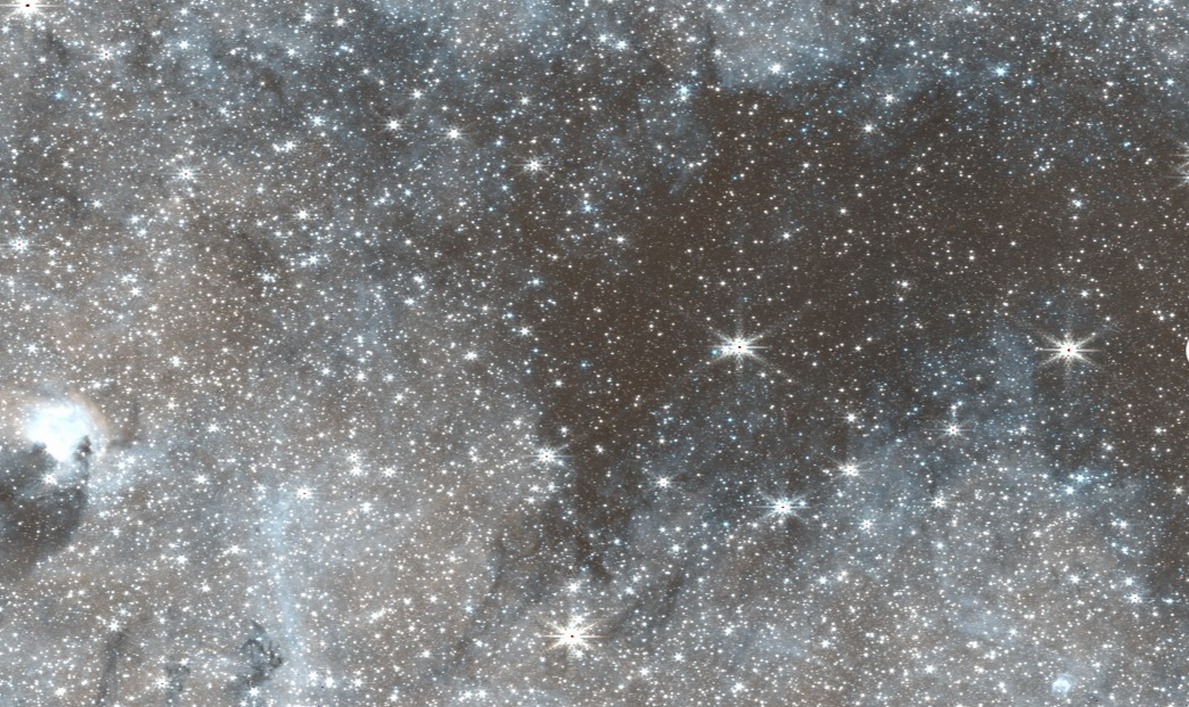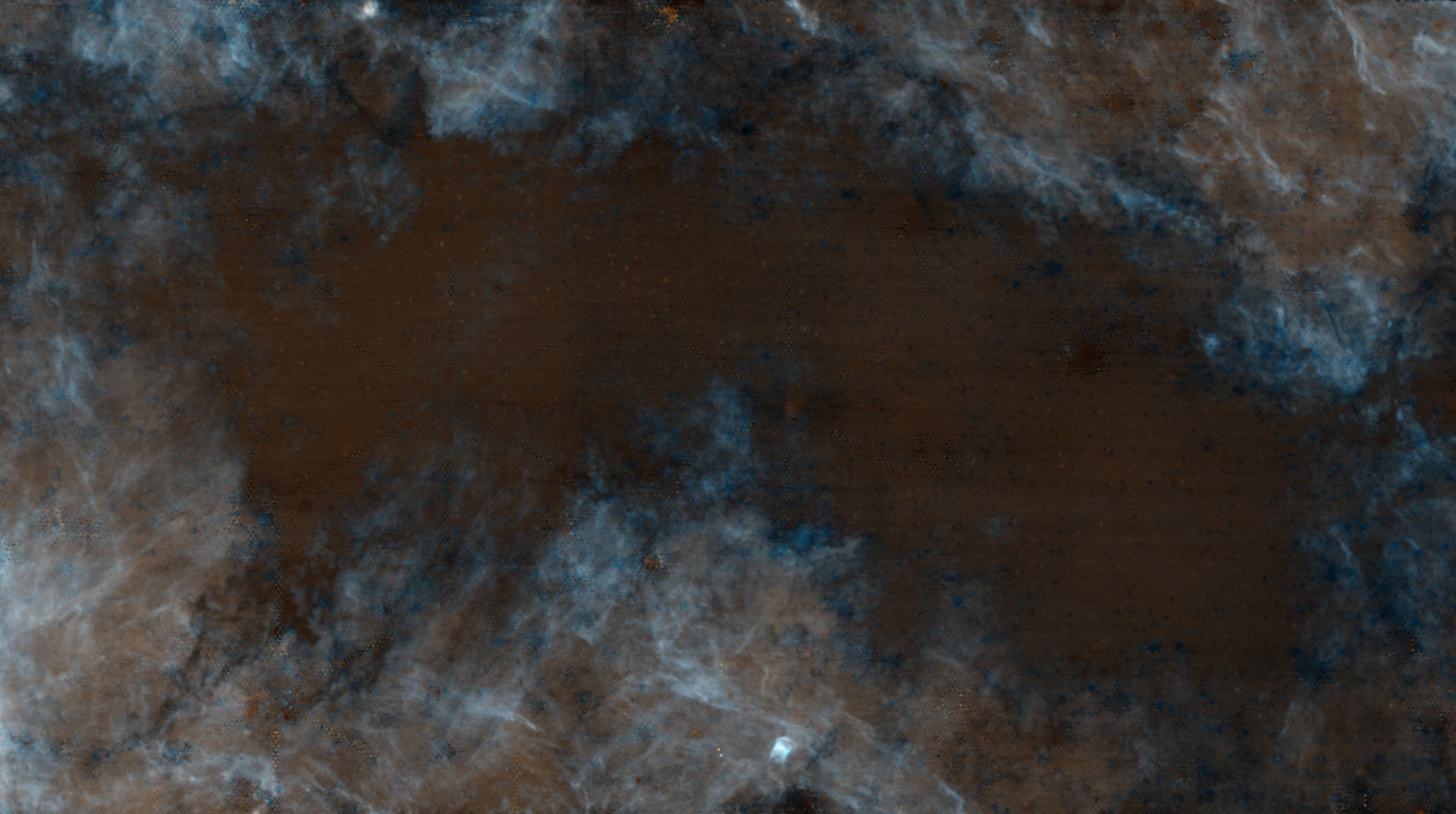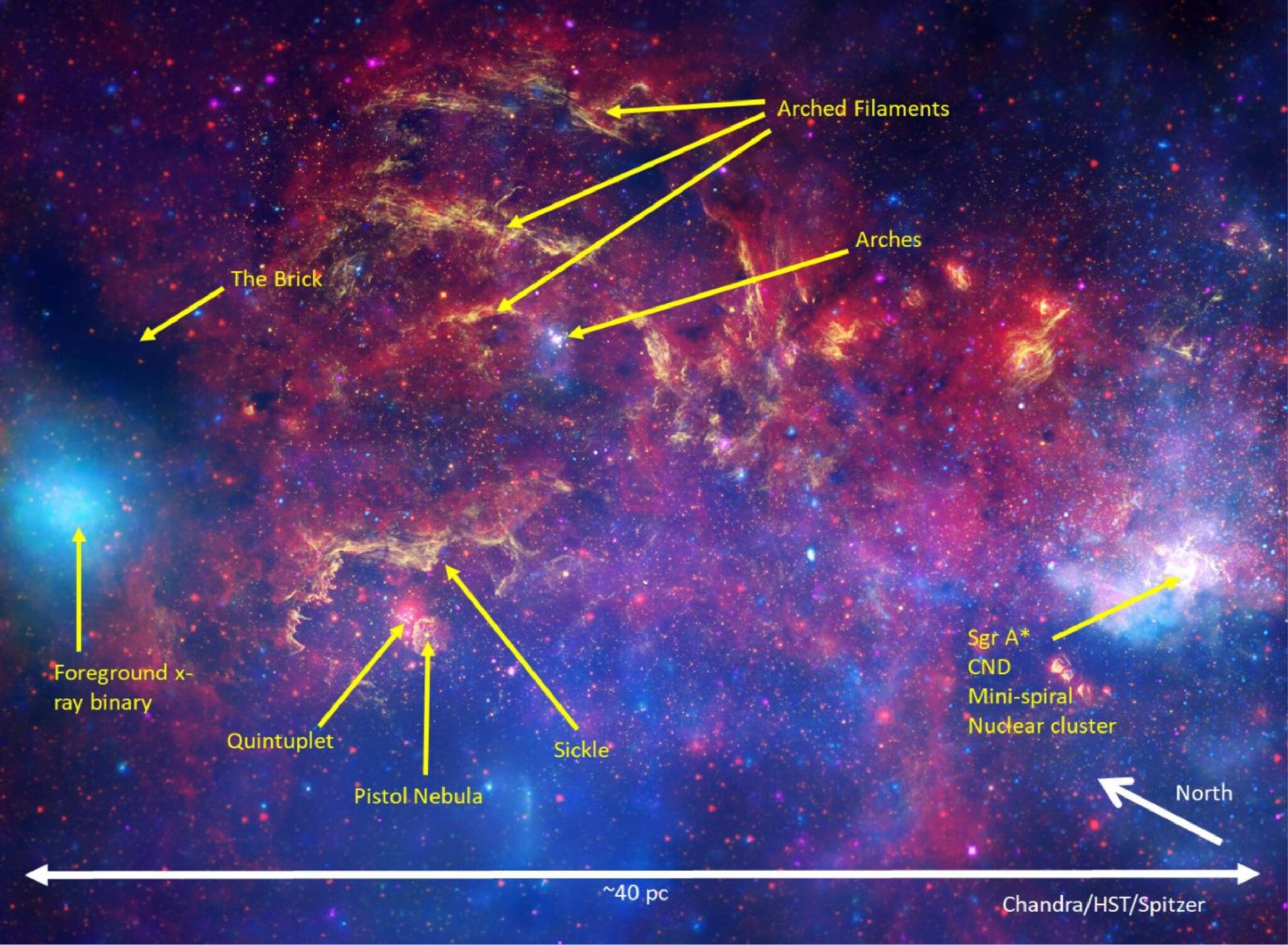The James Webb Space Telescope (JWST) witnessed a large amount of carbon monoxide ice in a giant cloud of molecular gas called The Brick near the center of our Milky Way galaxy.

The Brick, which is correctly designated G0.253+0.016, is part of the Central Molecular Zone, a large cluster of nebulae that exceeds our Sun by 60 million times in mass. Despite the fact that many clouds in this zone form stars, The Brick differs in that star formation has not begun in it, which remains an unresolved issue for astronomers.
One possibility is that The Brick is a young cloud that has not yet managed to form stars. Another theory claims that the gas inside it is too turbulent or is held by magnetic fields that prevent it from collapsing, which usually leads to the formation of stars.

Recent observations by James Webb show that there is a large amount of carbon monoxide ice in the cloud, which makes it special among other nebulae. Ice of this composition was previously difficult to detect in interstellar space. Astronomers note that this fact should be taken into account in further research.
Very cold conditions are necessary for the beginning of star formation, when the molecular gas drops to a temperature close to absolute zero. But the gas in The Brick turned out to be too warm compared to other molecular clouds around, although it contains a significant amount of ice.
James Webb’s exploration of the galactic center may have important implications for cosmology, helping to understand the conditions of star formation in the early Universe and explaining the emergence of supermassive black holes as a result of the gravitational collapse of molecular clouds. Clues may be hidden in the mysterious depths of nebulae such as The Brick.

The new findings, published in The Astrophysical Journal, are an important step in understanding the complex processes at the center of our galaxy.
Earlier, we reported on how scientists were stunned by the mysterious structures in the Milky Way.
According to Space
Follow us on Twitter to get the most interesting space news in time
https://twitter.com/ust_magazine


